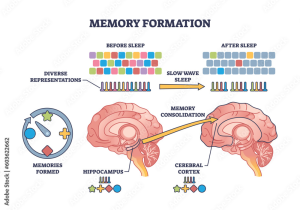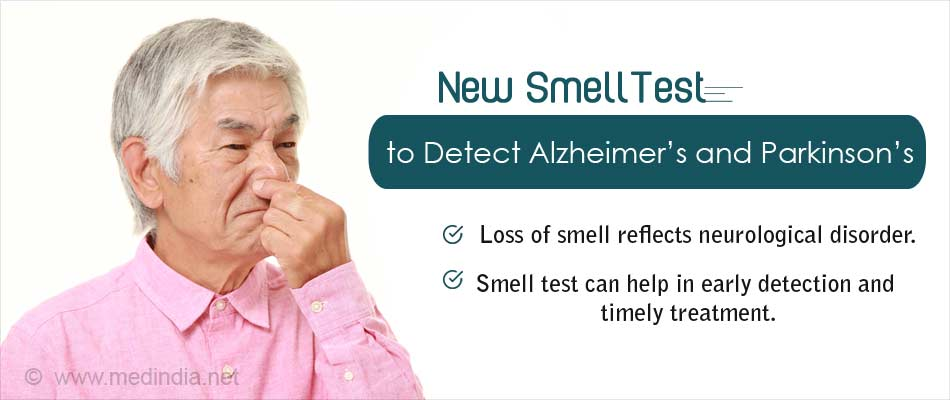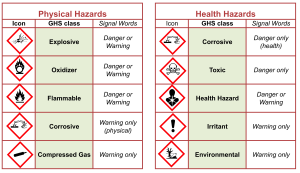The olfactory test for Alzheimer’s is emerging as a groundbreaking tool in the early detection of cognitive impairment. Recent studies indicate that our sense of smell and Alzheimer’s may be intricately linked, allowing healthcare professionals to identify individuals at risk of the disease long before traditional symptoms manifest. Researchers have developed a simple, at-home sniffing test that helps assess a person’s ability to recognize and remember various odors. This innovative approach not only offers a cost-effective and noninvasive neurological health assessment but also opens the door for earlier interventions in Alzheimer’s detection. By targeting the early signs of Alzheimer’s using olfactory evaluations, we may significantly enhance our understanding of neurodegenerative diseases and improve patient outcomes.
Recognizing the early indicators of Alzheimer’s disease can be challenging, yet innovative methods like olfactory assessments provide promising alternatives for screening. These cognitive impairment tests are designed to evaluate the olfactory capabilities of individuals, potentially revealing subtle changes that correlate with neurodegenerative disorders. The connection between an individual’s sense of smell and cognitive health is increasingly gaining attention as researchers explore the implications of early diagnosis. Tools such as at-home olfactory tests could revolutionize how we approach Alzheimer’s detection, offering a practical solution to identify those who may need closer monitoring. Furthermore, by utilizing insights from these sensory evaluations, we can pave the way for more comprehensive assessments and early interventions.
The Link Between Olfactory Tests and Alzheimer’s Detection
Olfactory tests play a crucial role in the early detection of Alzheimer’s disease. Recent studies indicate that the ability to identify and remember smells may be diminished in individuals at risk for cognitive impairment. Research conducted by Mass General Brigham has shown that older adults suffering from mild cognitive impairment tended to score lower on olfactory tests compared to their cognitively healthy peers. This emerging correlation between the sense of smell and Alzheimer’s signals a unique pathway for identifying symptoms long before they manifest as memory problems.
The potential of olfactory tests as a cognitive impairment test is especially promising. Early signs of Alzheimer’s may not always be apparent to the individual or their physicians, making traditional detection methods challenging. However, through a simple home test involving the identification of various scents, researchers aim to facilitate early diagnosis. The Aromha Brain Health Test, used in this research, exemplifies how noninvasive testing can pave the way for early intervention in Alzheimer’s treatment.
Understanding Cognitive Impairment Through the Sense of Smell
The sense of smell has been recognized as a vital component of neurological health. Researchers have demonstrated that subtle changes in olfactory function can signal underlying neurological issues, including Alzheimer’s disease. By assessing individuals’ ability to discern different odors, experts can gain insights into cognitive impairment levels. In the recent study, participants who reported concerns about their memory were invited to take the olfactory test, revealing a strong relationship between smell and cognitive health.
Furthermore, understanding the nuances of cognitive impairment can lead to better healthcare practices. When the olfactory test indicates a decline in smell sensitivity, it serves as a crucial early warning sign for potential neurodegenerative diseases. This information can guide healthcare providers in recommending appropriate follow-up actions or therapies to mitigate further cognitive decline. Thus, recognizing the interplay between olfaction and cognitive health can enhance preventative measures in the fight against Alzheimer’s.
The Importance of Early Intervention in Alzheimer’s Disease
Detecting Alzheimer’s disease early provides significant advantages for patient care and management. The sooner a diagnosis is made, the earlier appropriate interventions can be initiated. This can range from lifestyle changes and cognitive therapies to medications aimed at slowing disease progression. By incorporating olfactory tests as a preliminary assessment tool, healthcare practitioners have the opportunity to identify patients who may not yet show classic symptoms of memory loss but are at risk for cognitive impairments.
Moreover, early detection can also relieve the emotional burden on patients and their families. Understanding potential cognitive decline allows for planning and adjustments in caregiving. It empowers individuals and families to make informed decisions regarding treatment and services, thus improving overall quality of life. As research continues to support the link between olfactory dysfunction and Alzheimer’s, integrating such tests into routine neurological health assessments could greatly enhance early intervention strategies.
Olfactory Tests: A New Frontier in Alzheimer’s Research
The evolution of olfactory tests marks a promising advancement in Alzheimer’s research. Unlike conventional cognitive assessments that can be expensive and invasive, the olfactory test provides a cost-effective alternative that is easy to administer. Researchers have expressed confidence in the potential of these tests to be used widely in various clinical settings. Conducting follow-up studies with larger, more diverse populations will further validate olfactory testing as a reliable screening method for Alzheimer’s.
Additionally, the research team emphasizes that incorporating neuropsychological assessments alongside olfactory tests could enhance predictive capabilities regarding cognitive decline. This multidisciplinary approach would create a more comprehensive understanding of Alzheimer’s progression and pathology. As these techniques gain traction, they might redefine the standards for diagnosing cognitive impairments, leading to more accurate timelines for interventions.
How Smell Changes with Age and Cognitive Health
Research illustrates a clear connection between aging, smell, and cognitive health. As individuals age, their olfactory function naturally declines, yet the rate and extent of this decline can vary widely among individuals. This variability can serve as a valuable indicator of cognitive health status. Older adults exhibiting pronounced olfactory dysfunction might benefit from cognitive screening to assess their risk for greater neurological conditions, including Alzheimer’s disease.
In recognizing the relationship between aging and the sense of smell, it’s essential to consider lifestyle factors that could mitigate these changes. Engaging in regular exercise, maintaining a balanced diet, and stimulating the brain through cognitive activities can help preserve both olfactory function and cognitive health. Understanding this interplay can empower older adults and their caregivers to adopt healthier lifestyle choices that may help delay the onset of Alzheimer’s.
Cognitive Decline and its Early Warning Signs
Identifying early signs of cognitive decline is key to managing Alzheimer’s risk effectively. Symptoms such as forgetfulness, confusion, and issues with reasoning can often be overlooked, making it essential to validate other indicators, including olfactory deficits. The olfactory test can serve as a non-invasive early warning mechanism, alerting both patients and healthcare providers to potential cognitive issues that require further investigation.
Studies have reaffirmed that the olfactory system is closely linked to memory and learning, and any decline in these functions can signal a risk of cognitive impairment. Researchers are advocating for proactive health assessments that include olfactory testing as standard practice in clinical environments. By identifying these early warning signs through accessible testing methodologies, we can better prepare for effective strategies that support cognitive health.
The Future of Alzheimer’s Assessment with Noninvasive Techniques
The future of Alzheimer’s assessment seems increasingly promising with innovations in noninvasive testing. Tools like olfactory tests pave the way for a shift in how Alzheimer’s and related cognitive impairments are detected and monitored. The accuracy, affordability, and ease of at-home olfactory testing could revolutionize the approach to early detection and research, allowing more people to take part in studies that could lead to groundbreaking treatments.
Furthermore, incorporating technology such as smartphones to conduct odor tests could significantly expand the reach of this research method. As healthcare systems aim to streamline diagnostic protocols, integrating these noninvasive techniques could ultimately lead to earlier identification of Alzheimer’s, resulting in more timely interventions and better quality of life for patients. The strides made in olfactory testing represent an engaging frontier in the ongoing battle against cognitive disorders.
Cultural and Linguistic Considerations in Alzheimer’s Testing
When conducting cognitive assessments, it is crucial to consider cultural and linguistic diversity. The recent studies involving English- and Spanish-speaking participants demonstrate that olfactory tests can be adapted for a wide audience, enabling cross-cultural research on Alzheimer’s detection. Addressing these diversity issues in testing is vital to ensuring all populations benefit from early detection methods and tailored interventions.
Future studies should continue to explore how language and cultural nuances can affect individuals’ performance on olfactory tests. Understanding these variations can provide deeper insights into the relationship between olfactory function and Alzheimer’s across different demographics. By including a broad range of participants in research, the scientific community can develop testing protocols that are equitable and effective for all, ultimately improving outcomes in Alzheimer’s detection and treatment.
The Role of Research in Advancing Alzheimer’s Detection Techniques
Research plays a critical role in advancing techniques for Alzheimer’s detection and understanding cognitive impairment. Ongoing studies, such as those conducted at Mass General Brigham, are at the forefront of discovering how nontraditional methods like olfactory testing can lead to earlier diagnosis. As researchers refine these techniques, they contribute to a growing body of evidence that supports innovative approaches to cognitive health assessments.
Through rigorous testing and validation, researchers aim to establish olfactory tests as reliable standards within medical practice. The implications of such advancements are profound, extending not only to improved patient outcomes but also to broader public health strategies in addressing cognitive decline. With continued research commitment, the future of Alzheimer’s detection looks more secure, fostering hope for better management and understanding of this complex disease.
Frequently Asked Questions
What is the olfactory test for Alzheimer’s and how does it work?
The olfactory test for Alzheimer’s is a simple at-home assessment designed to evaluate an individual’s sense of smell as a potential early indicator of cognitive impairment or Alzheimer’s disease. Participants are asked to sniff different odors presented on a card, testing their ability to discriminate, identify, and remember these scents. Research shows that older adults exhibiting cognitive impairment often score lower in this test compared to cognitively healthy individuals.
How does the sense of smell relate to Alzheimer’s detection?
Research indicates that olfactory dysfunction may be an early sign of Alzheimer’s disease and other neurodegenerative conditions. Individuals with compromised sense of smell are at a higher risk for cognitive decline. The olfactory test for Alzheimer’s assesses this sense, providing valuable insights into a person’s neurological health and serving as a noninvasive measure for early intervention.
What are the early signs of Alzheimer’s that the olfactory test can identify?
The olfactory test can help identify early signs of Alzheimer’s by detecting subtle declines in odor identification, memory, and discrimination associated with cognitive impairment. Participants with mild cognitive issues typically perform worse on the olfactory test compared to those without such issues, making it a useful tool for early Alzheimer’s detection.
Can the olfactory test for Alzheimer’s be performed at home?
Yes, the olfactory test for Alzheimer’s is designed to be easily performed at home. Participants use a card with odor labels to assess their ability to identify and remember each scent, allowing for convenient self-assessment that can help identify risks for cognitive impairment early.
Why is an olfactory test considered a cost-effective option for Alzheimer’s assessment?
The olfactory test for Alzheimer’s is considered cost-effective because it is noninvasive, simple to administer, and can be conducted in the comfort of one’s home without the need for extensive medical equipment or professional supervision. This accessibility makes it an attractive option for early detection and research in Alzheimer’s disease.
What implications do the findings from the olfactory test research have on neurological health assessments?
The findings suggest that incorporating olfactory tests into neurological health assessments could enhance the early detection of Alzheimer’s and other neurodegenerative diseases. They indicate that olfactory dysfunction serves as a reliable predictor of cognitive decline, potentially guiding future research and treatment strategies.
| Key Point | Details |
|---|---|
| Olfactory Test Development | Mass General Brigham researchers created a home-based olfactory test to assess the risk of Alzheimer’s. |
| Early Detection Importance | The test aims to identify cognitive impairment years before symptoms appear. |
| Test Methodology | Participants sniff odor labels on cards to evaluate their smell identification and memory. |
| Cognitive Impairment Scores | Older adults with cognitive impairment scored lower than cognitively normal adults on the test. |
| Language and Inclusivity | The study included both English and Spanish speakers with equal performance outcomes. |
| Future Viability | Additional studies could help in predicting cognitive decline in patients over time. |
| Funding Source | The study received funding from the National Institutes of Health. |
Summary
The olfactory test for Alzheimer’s is a groundbreaking development in early detection methods. By using a simple at-home test that evaluates the ability to identify and remember odors, researchers aim to identify individuals at risk of Alzheimer’s disease well before they exhibit any cognitive symptoms. This innovative approach not only provides a cost-effective and noninvasive way to assess cognitive health but also sets the stage for future research and interventions that could significantly impact Alzheimer’s treatment and diagnosis.









